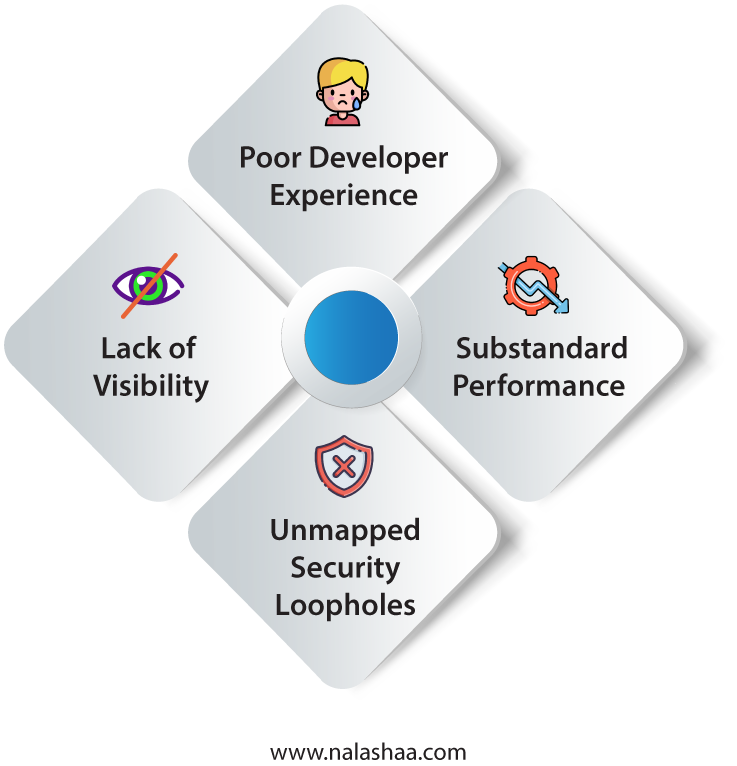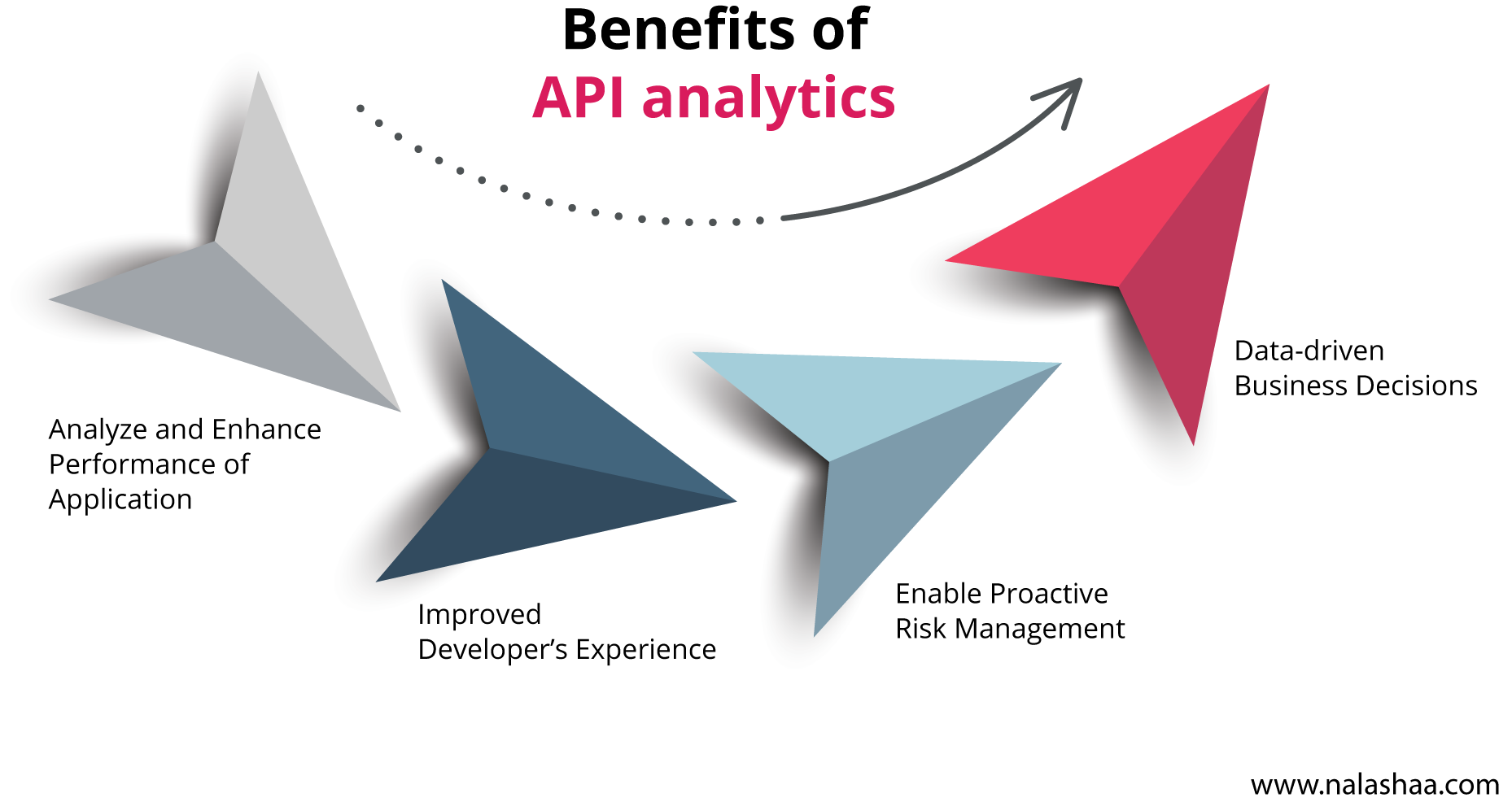APIs have become an essential part of modern businesses. As digital transformation continues to shape industries, companies are looking for innovative ways to improve their operations and stay ahead of the curve. That’s where software product engineering services come in. By analyzing the data generated from APIs, businesses can gain valuable insights into their operations and customer behavior, which can help them make data-driven decisions.
Data, such as the following, and more, can all be tracked and monitored through API analytics solutions which enable businesses to make data-driven decisions across their operations.
- Number of API requests per minute
- API’s uptime
- API latency
- API errors per minute
- Customer demographics via API Usage
- Customer Requirements
- Top used APIs
- ROI of API
What is ‘API Analytics’?
API analytics is a solution offered by most of the leading providers of enterprise software development services to track and monitor API usage. An organization utilizing API analytics solutions can set its own KPIs as goals and fashion customized reports and dashboards to empower its teams with increased visibility into their APIs.
API analytics and API monitoring go hand in hand. The API management teams address glitches through API analytics solutions by analyzing and monitoring the incoming and outgoing data and sending alerts on anomalies.
C-suite, Why Do you Need API Analytics?

If API analytics are not implemented, you may run into the challenges below -
- Poor Developer Experience: If you are not using API analytics and monitoring their performance, API glitches are not reported to developers on time. This puts external developers utilizing the APIs at stake and impacts their productivity negatively. Without API analytics, organizations are at the risk of jeopardizing the productivity of their stakeholders.
- Substandard Performance: APIs often hit snags owing to multiple reasons such as increasing traffic, unfamiliar data types, incorrect request calls and such. Without API analytics, internal teams responsible for API management have no visibility into the deteriorating performance.
- Unmapped Security Loopholes: As APIs connect one service to another via the internet, they also act as a doorway for hackers with malicious intent to access and retrieve sensitive data. With no solution to monitor or flag these inconsistencies, teams managing the API will stay unaware of the myriad of security loopholes.
- Lack of Visibility: In the absence of software development services, there is a lack of visibility into what the APIs are used for when they’re used, and by whom they’re used. This results in a lack of visibility into API monetization data. When organizations do not know which APIs are bringing in more revenue and which are drowning, businesses cannot make decisions as to revenue/resource allocation or optimize their API monetization approach.

Take Your Business Forward with API Analytics
Since we now know the business benefits one can reap from API analytics, let’s get into the ‘how’. Here are a few use cases of API analytics to aid your API Management Journey.
Improve Business Offerings with Cohort Analysis
A cohort in analytics is a segment of the target audience or even the target audience itself. In short, it’s a group of people with a shared interest.
- Using API analytics, businesses can tap into historical user journeys, behavioral data, service utilization, etc. Using this data, businesses can predict user expectations and requirements and build offerings for the different cohorts. When users are satisfied, they stay loyal to the organization, as the user journey is in line with their expectations.
- Using API analytics many organizations can gain in-depth visibility into cohort expectations to enable the personalization of offerings and customize sales funnels to increase the likelihood of conversion of each cohort. Businesses can rely on the data from API analytics to improve their customer retention rates by tracking the same user journeys and making necessary adjustments.
Better Security Management of APIs
Identity and Access Management (IAM) for APIs are one of the ways of securing APIs against malignant use. IAM is a cybersecurity best practice that promises secure control over user access.
- When delegating access to team mates for certain tasks pertaining to editing/reviewing the APIs, the person delegating the task can share an access token. The access token is not the same as sharing the login details, as it is time-bound and offers only limited access. Together IAM and API analytics solutions help businesses monitor security by outlining who has access, what they can access, and why they need to access it. Integrating API analytics with IAM provides a holistic insight into risk management and an improved security posture.
Craft User-friendly Journeys
Customers are constantly on the internet making request calls through APIs to gain access to services they require. This results in a constant increase in API calls, and thus there is a constant concern of users with malicious intent crawling through these APIs to cause security inconsistencies . With the right insight from API analytics, one can secure APIs, offer a safe and intuitive experience for their customers.
-
When an application is utilized and services are called through APIs, teams that have access to API analytics are notified of the same. The analytics can show how long it took to make the request call, process it, and respond to the user with the expected result.
- Sometimes, owing to fraudulent requests, an APIs response time shoots up impacting the user experience. Implementing a rate-limiting strategy to block clients that request transactions above a ‘normal’ limit. This limit will be identified and implemented by the development team – enabling proactive risk management.
-
With API analytics in the picture, one can reach out to customers if they seem to get stuck in certain intersections within the applications and help them move forward. User experience teams can map the journey and add additional customer support suggestions plugged into these intersections.
- Users may have browsed through the subscription pricing list, added products to their cart, read a couple of assets on a topic – these actions can be recorded in the analytics solutions, owing to the microservices architecture, it which points to the page/location where the customer dropped from their journey. Business can send them reminder e-mails or notifications, urging them to complete the user journey – which is purchasing the service/product. A response to these reminders can help businesses in qualifying the users as leads.
Enables Data-driven Business Decisions
API monetization is how businesses make money off of APIs, directly or indirectly. Having API analytics is beneficial when monetizing APIs as it will help businesses make data-driven decisions based on API usage.
- Utilizing API analytics, businesses get an insight into the revenue amassed by certain APIs. This revenue can be compared with the cost of developing and maintaining the API, and subsequently calculate the ROI on the API.
- Visibility into the ROI of an API can help make data-driven business decisions. Businesses can appropriately scale the resources spent on a specific API, depending on the revenue earned through the API. Visibility into revenue can also shine light on which business offering/service is being called more, thereby enabling decision makers to scale their expenditure accordingly.
Through API analytics, businesses can make sure that they are spending wisely on their APIs and there is no wastage in expenditure.
API Analytics Solutions Drive Insightful Decisions
In conclusion, API analytics as a part of software product engineering services is the way forward for organizations looking to make data-driven decisions to drive optimized productivity. We’ve got engineering teams that offer the best solutions customized to your business goals. Partner with Nalashaa, one of the top software development companies in USA arm your business with API analytics, eliminate roadblocks, and stay ahead of the competition with actionable data insights on your side.

